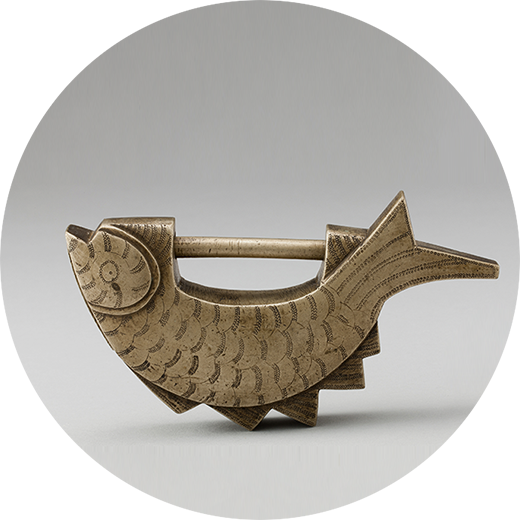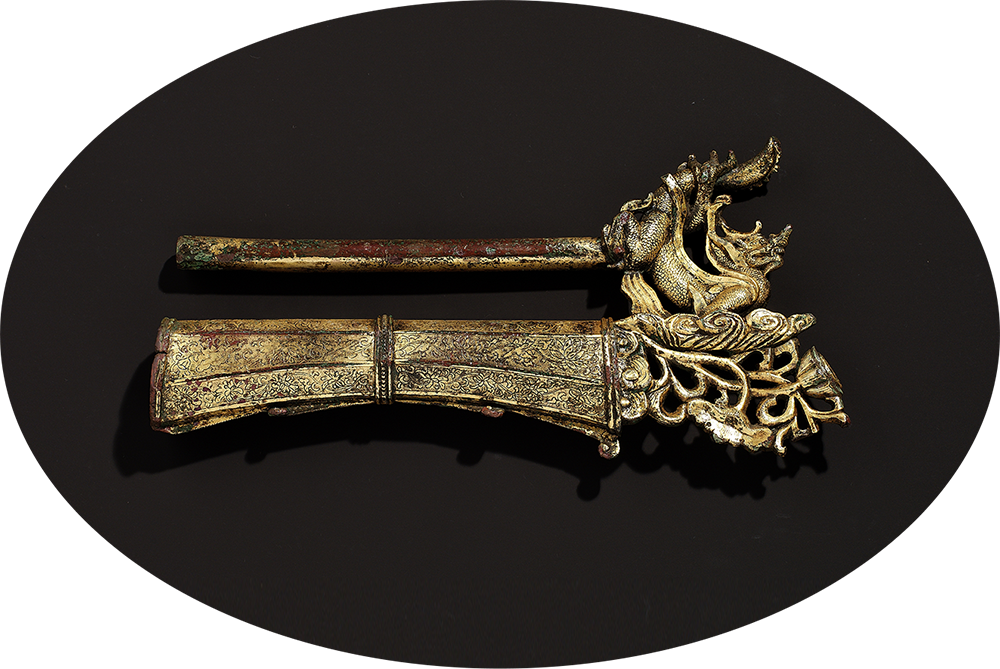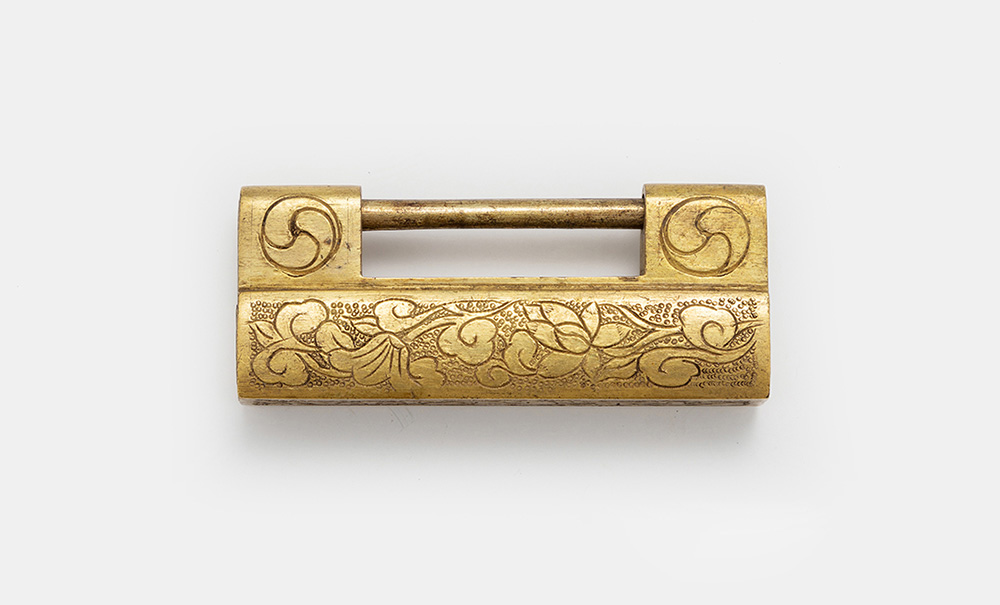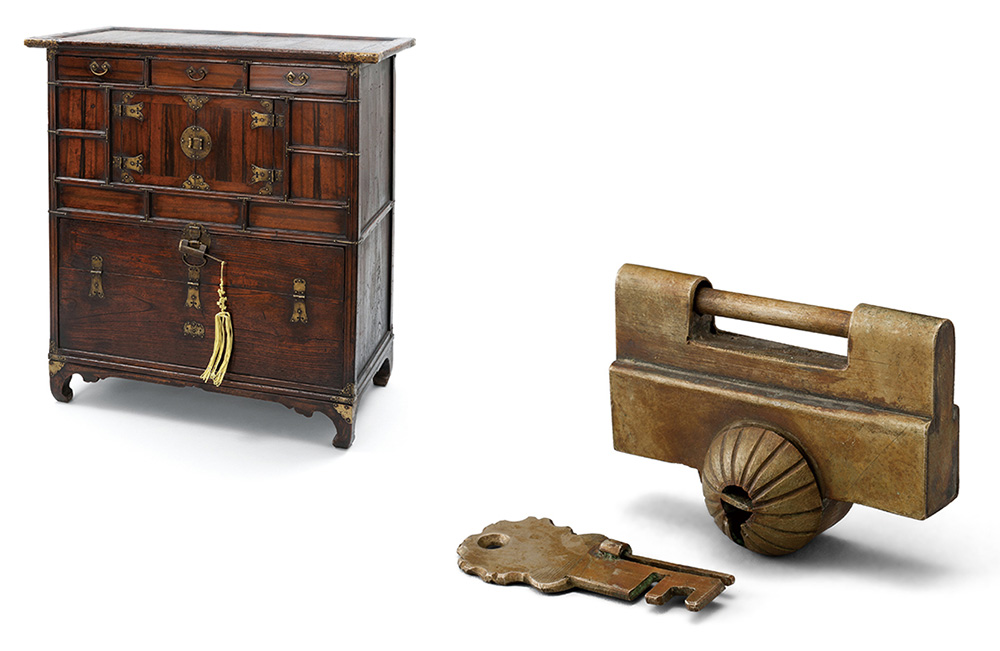Art of Detail
Through the Keyhole
How Traditional Korean Locks Blend Security and Style
- Written by Tim Alper contributing writer
- PHOTOS COURTESY OF National Folk Museum of Korea
They may look like decorative flourishes to some, but Koreans once depended on sturdy locks to safeguard their most valuable spaces―while taking care to ensure these heavy-duty locks remained aesthetically pleasing.
If you have spent any time in modern Korea―and come from a country like my native UK, where everyone you meet has a pocket full of jangling keys―you were probably astounded by the lack of keys. Modern Korean apartments have doors that feature high-tech iris-scanning hardware or fingerprint sensors. Even older apartments usually have electronic passcode entry systems, meaning that you’ll rarely hear people shout “Don’t forget your keys!” to a family member in Korea.

But things were not always thus. Archaeologists working at the Busosanseong Fortress in Buyeo, Chungcheongnam-do Province have made some eye-opening discoveries about the way the fortress’ first inhabitants―nobles of the Baekje Kingdom, which ruled a third of the Korean Peninsula from 18 BCE to 660 CE―locked their doors. Here, ancient iron locks were found. These may have once kept an important room or building off-limits for would-be trespassers.
Korean lock-making skills could well predate the Baekje Kingdom, but the archaeological record is yet to provide any further clues about lock-making prior to this find. However, the iron Busanseong Fortress lock is sophisticated in design, hinting that perhaps its makers had access to highly developed tools and could call upon experienced artisans to create such locks.
Like many subsequent designs, this Baekje-era lock was shaped roughly in the form of the Korean letter ㄷ. Iron might have been the metal of choice in the Baekjae period, but it was soon superseded by more robust metals and metal alloys, which allowed locks to better resist corrosion and also add more in the way of aesthetic appeal to the doors and furniture they protected.
During the Joseon Dynasty (1392-1910), many locksmiths began using brass, due to the fact that they had learned how to make suitable alloys from copper and zinc. And while these brass fixings were a massive upgrade on the old iron designs, by the end of the Joseon era, many artisans has started using cupronickel. This super-sturdy alloy of copper, nickel and other metals can even resist the ravages of salty seawater.

Traditional Korean locks came in many shapes and forms. © National Palace Museum of Korea
Safe as Houses
While modern padlocks and door locks are often small, with light and very portable keys, traditional Korean locks were incredibly thick and long. They were designed to last, and were often set into heavy wooden doors that could not be forced open without the aid of serious military hardware. The locks featured a number of tumblers, latches and pins that even the most gifted of lock-picking thieves would struggle to open.
There was an extra layer of security, too. Opening such locks was not a simple matter of inserting a key and turning. In fact, each lock and key had to be operated in a completely different manner, meaning that only people trained to use them could hope to unfasten them.
The keys themselves were large and heavy (and sometimes as ornate-looking as their splendid locks). It takes an artisan over a week to create such a key―and considerably longer than this to make a lock.
Multi-tumbler systems and other innovations meant that opening a lock like this was often a multi-step process. When they were used to seal chests, wardrobes and other items of furniture, owners could rest assured that even if a thief did gain access to their keys, the secrets within would likely stay safe.

Traditional Korean locks came in many shapes and forms. © National Palace Museum of Korea
Delightful Design
Although safety was the reason for being for traditional locks, they were also intended to be highly decorative, and even function as centerpieces for the doors they protected. The metals used to create locks were highly functional, but were also intended to dazzle those who came face-to-face with them. The locks were sometimes decorated using sophisticated etching techniques, whereby grooves were carved and then filled with silver thread. Keyholes were often concealed, in order to give a more even look to the lock.
Modern folk have grown accustomed to rather bland and practical-looking locks, but in the Korea of the past, locks were designed to bear deep symbolic meaning. As such, if you look carefully, you will find a plethora of lock designs on historic Korean buildings.
Animal-related symbolism was popular. One such design was the tortoise, whose hard shell spoke of impenetrability, as well as longevity. Fish, meanwhile, were often chosen due to the fact that they have no eyelids: Their watchful eyes remained open at all times, ensuring no criminal could evade their gaze. Floral patterns were also used, as many flowers were also associated with long life spans, as well as values such as harmony and wisdom.
In some cases, locking mechanisms, particularly ㄷ-shaped designs, could be found on the outside of a door or item of furniture, rather than embedded like a conventional modern lock. This is a testament not only to these items’ enormous physical appeal, but also to their creators’ confidence in them. Even when exposed thus, picking or forcing these impressive locks was almost unthinkable.

Traditional locks protected your personal possessions with exquisite craftsmanship. (left)
Traditional Korean locks came in many shapes and forms. (right)





